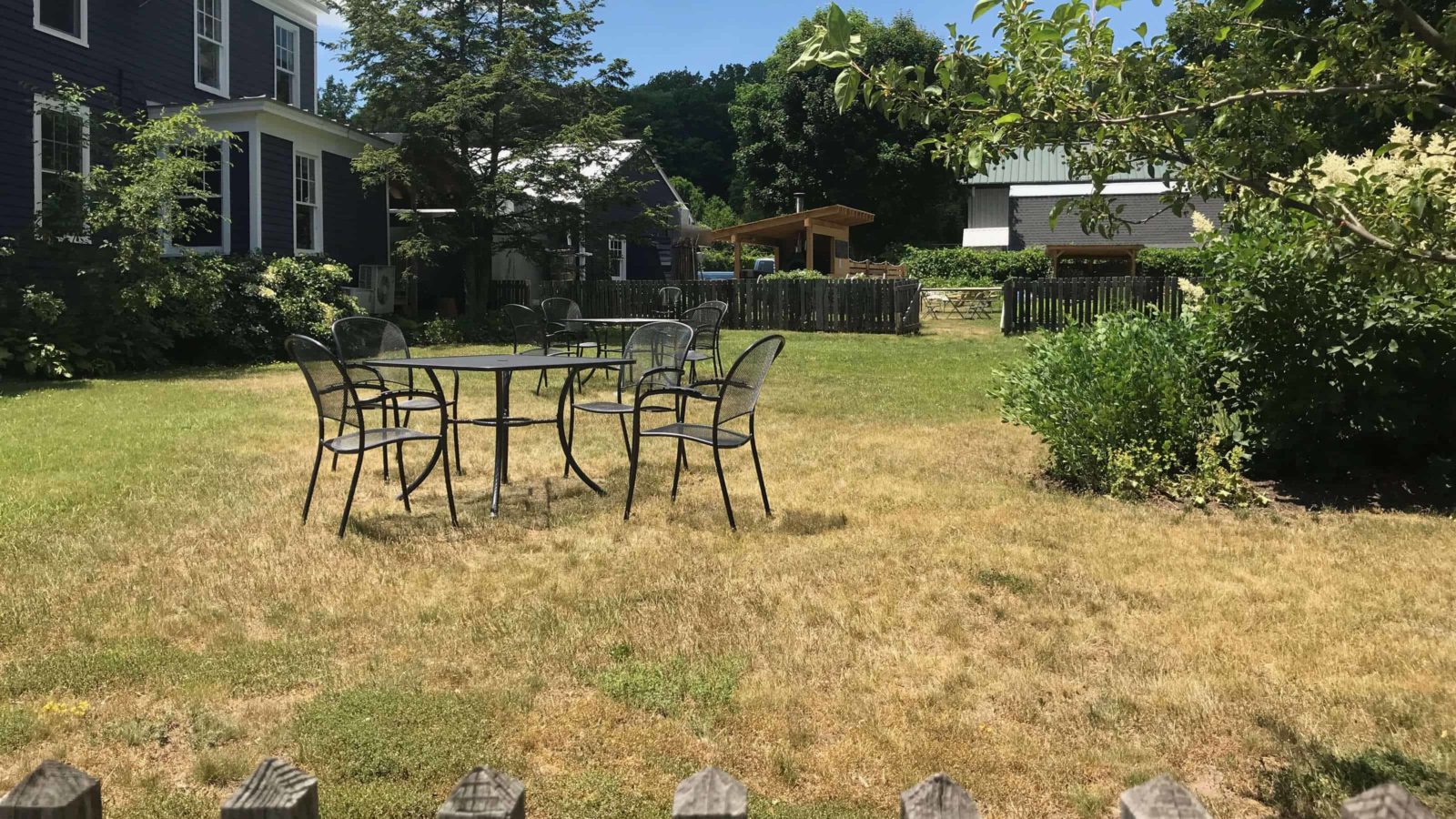At the Prairie Whale in Great Barrington, strings of lights are gleaming in the evening light above the tables and chairs on the lawn. Most of the chairs are full on a Friday night, and voices carry over the grass. They sound eager but not loud. One group asks a server about the menu. The diners and the waiters are all wearing masks.
Around the corner picnic tables are set out in the garden, near the rose bushes and the strawberry beds, alongside a newly built pizza oven.
Covid-19 has caused sweeping change in local restaurants since it forced them to close in mid-March without warning and allowed only take-out and delivery. Restaurants across the region are working to adapt as pandemic and the seasons continue to change.
State regulations are changing steadily, as the state pursues its gradual re-opening plan. The state allowed restaurants to open for outdoor dining again in early June, in the first part of the second phase of re-opening, and limited indoor dining later in the month.
By midsummer, a few blocks from the Prairie Whale, Railroad Street in Great Barrington closed to traffic for the night and filled with tables.
And by late fall, when the weather turned cold, the Prairie Whale has returned to a takeout menu again, seven days a week — Sicilian-style pizza, fried chicken, shepherd’s pie, corn bread, hot chick peas in a tomato and pepper romanesco sauce …
Sweeping change has called for sweeping responses.
“It’s like opening a new restaurant every two to three weeks,” said chef Stephen Browning.
Before this March, the Prairie Whale had never served food to go. Browning changes the menu with the seasons, and the restaurant has been a sit-down place serving locally sourced, locally raised comfort food — the kind of place where you sit down to Sunday brunch in a renovated dairy barn with farm sausage and bacon, polenta and scones with clover honey.
When Covid-19 struck in March, they had to re-organize the whole operation, said owner Mark Firth.
Serving only food to go has meant letting go of their wait staff and wholly changing their menu. They had to find food that would travel well. Their regular menu was not designed to stand up to waiting in a cold car on a March night.
“You wouldn’t want a whole roast fish or a rare steak,” he said. “It won’t hold up while you drive 20 minutes home and the French Fries get soggy.”
They developed a new range of family style dinners that a group could share, like fried chicken and a collection of five or six sides to choose from.
Firth and his wife and son answered the phones and took the orders, and the kitchen crew turned to preparing family meals at high speed.
The restaurant also launched a website, Firth said, They had never had one before, and they needed make the menu available online.
For five or six of weeks they served only food to go, he said. They expanded the menu — and in a way, the kitchen. They bought a wood-fired pizza oven and spent three weeks building an outdoor shelter for it, and Firth brought in a chef from New York to teach them to bake crisp Neapolitan-style crusts at 750 to 800 degrees.
Now that the state has allowed restaurants to open for outdoor dining, and begun to allow limited indoor seating, the Prairie Whale is re-organizing again.
“We’re trying to re-hire our staff,” Firth said, “and the kitchen can’t handle both the outdoor service and the high-volume fried chicken (style of to-go cooking).”
They brought back some of their bar tenders and waiters, and they continued with the to-go menu, including pizza, while they rebuilt a restaurant menu for the people who come to them.
They also built up their stores again, Browning said. He sources ingredients locally even in the cold season and traditionally makes many of his own condiments, pickles and preserves to keep the summer and fall harvest going through the winter. The quick changes this spring disrupted all of his systems and sources of supply.
He would have been making pickles and sauces and bacon this spring. Firth, who has traditionally raised his own pigs for the restaurant, says they could not get farm-raised pigs in the spring, not until late June, when they could source some again from a local farm.
So they rebuit this summer around 15 outside tables on their two-thirds of an acre of lawn and gardens.
“We have a lot of outdoor space,” Browning said. “We’re lucky.”
As the weather gets colder, the pizza oven is heating up and the takeout menu includes quarts of soup or chili to warm up at home and a bottle of wine to go with them.
This story first ran in the Hill Country Observer — our thanks to editor Fred Daley.

